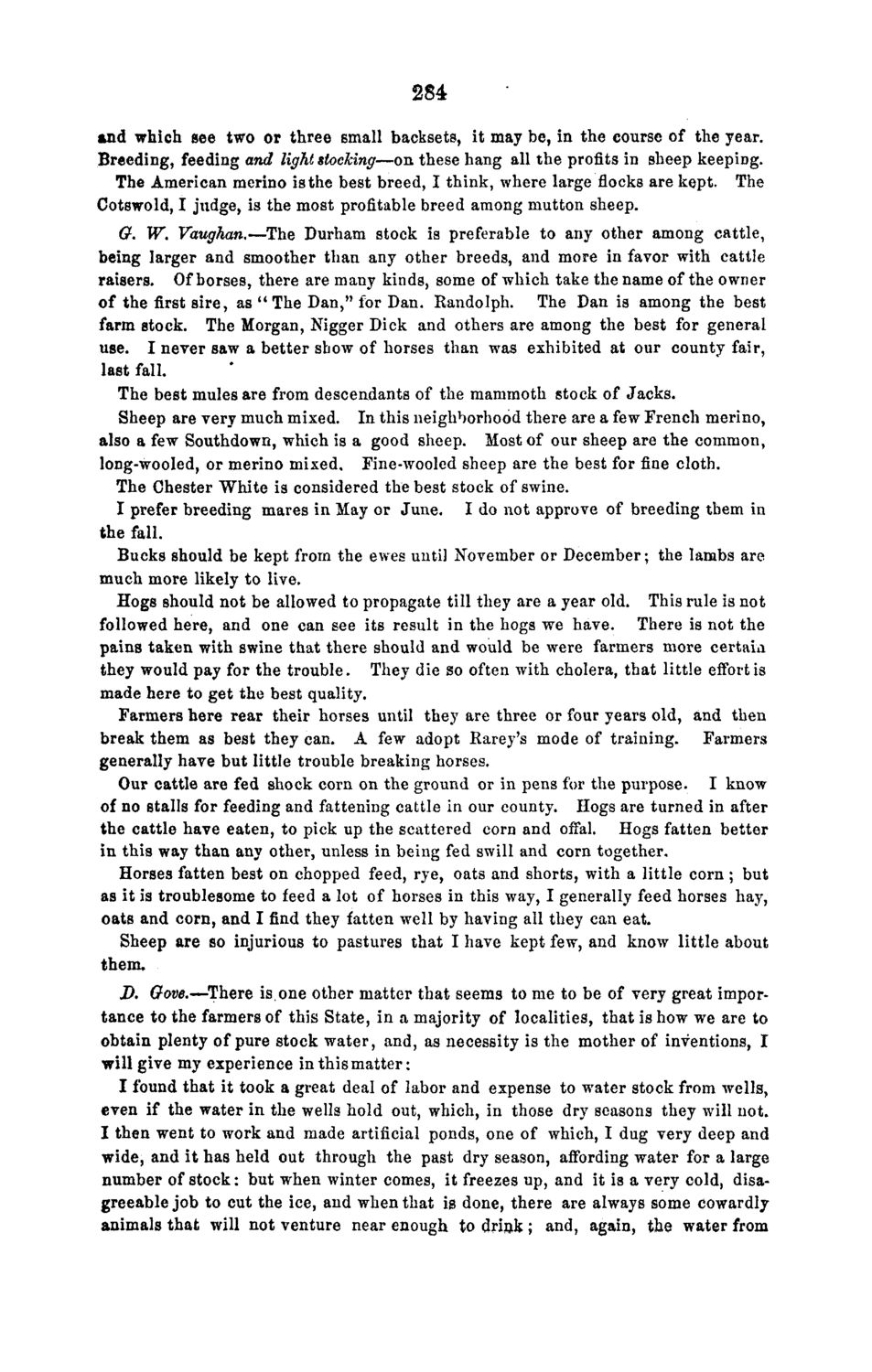| |
| |
Caption: Board of Trustees Minutes - 1868
This is a reduced-resolution page image for fast online browsing.

EXTRACTED TEXT FROM PAGE:
284 and which see two or three small backsets, it may be, in the course of the year. Breeding, feeding and light stocking—on these hang all the profits in sheep keeping. The American merino is the best breed, I think, where large flocks are kept. The Cotswold, I judge, is the most profitable breed among mutton sheep. G. W. Vaughan.—The Durham stock is preferable to any other among cattle, being larger and smoother than any other breeds, and more in favor with cattle raisers. Of horses, there are many kinds, some of which take the name of the owner of the first sire, as " The Dan," for Dan. Randolph. The Dan is among the best farm stock. The Morgan, Nigger Dick and others are among the best for general use. I never saw a better show of horses than was exhibited at our county fair, last fall. The best mules are from descendants of the mammoth stock of Jacks. Sheep are very much mixed. In this neighborhood there are a few French merino, also a few Southdown, which is a good sheep. Most of our sheep are the common, long-wooled, or merino mixed. Fine-wooled sheep are the best for fine cloth. The Chester White is considered the best stock of swine. I prefer breeding mares in May or June. I do not approve of breeding them in the fall. Bucks should be kept from the ewes until November or December; the lambs are much more likely to live. Hogs should not be allowed to propagate till they are a year old. This rule is not followed here, and one can see its result in the hogs we have. There is not the pains taken with swine that there should and would be were farmers more certain they would pay for the trouble. They die so often with cholera, that little effort is made here to get the best quality. Farmers here rear their horses until they are three or four years old, and then break them as best they can. A few adopt Rarey's mode of training. Farmers generally have but little trouble breaking horses. Our cattle are fed shock corn on the ground or in pens for the purpose. I know of no stalls for feeding and fattening cattle in our county. Hogs are turned in after the cattle have eaten, to pick up the scattered corn and offal. Hogs fatten better in this way than any other, unless in being fed swill and corn together. Horses fatten best on chopped feed, rye, oats and shorts, with a little corn; but as it is troublesome to feed a lot of horses in this way, I generally feed horses hay, oats and corn, and I find they fatten well by having all they can eat. Sheep are so injurious to pastures that I have kept few, and know little about them. D. Gave.—There is. one other matter that seems to me to be of very great importance to the farmers of this State, in a majority of localities, that is how we are to obtain plenty of pure stock water, and, as necessity is the mother of inventions, I will give my experience in this matter: I found that it took a great deal of labor and expense to water stock from wells, even if the water in the wells hold out, which, in those dry seasons they will not. I then went to work and made artificial ponds, one of which, I dug very deep and wide, and it has held out through the past dry season, affording water for a large number of stock: but when winter comes, it freezes up, and it is a very cold, disagreeable job to cut the ice, and when that is done, there are always some cowardly animals that will not venture near enough to drink; and, again, the water from
| |